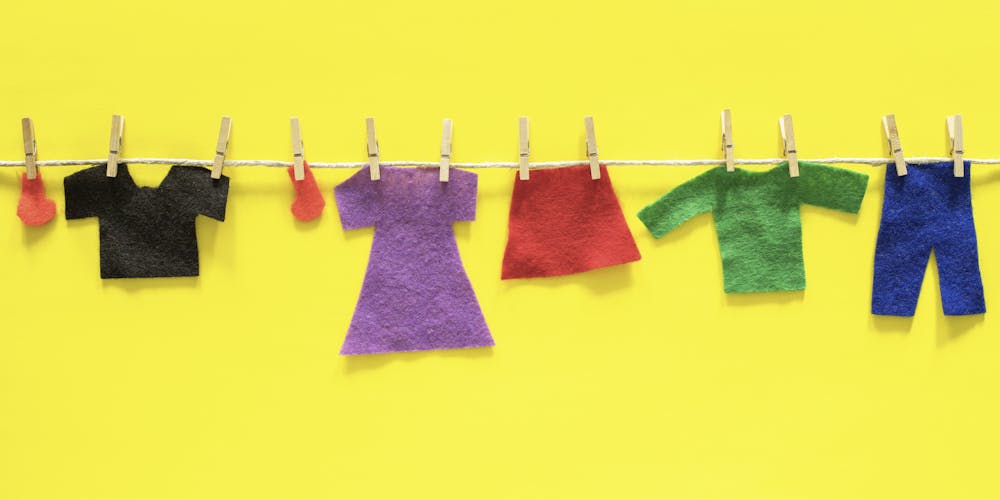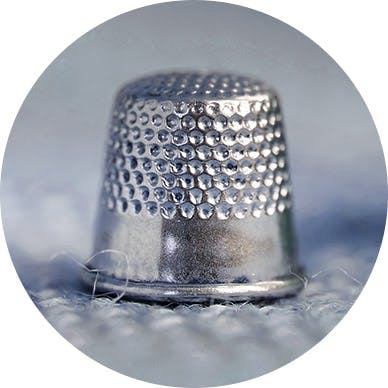Felt is a versatile material that has been used for centuries in various applications. Understanding the basics of felt, its composition, and its history can help us appreciate its many uses. In this article, we will explore the various types of felt and its multifaceted uses in crafts, as well as its industrial applications.

Understanding the Basics of Felt
Felt is a non-woven fabric made from fibers that are interlocked and matted together through a process called felting. It is known for its soft texture, durability, and ability to retain its shape. Felt is made by subjecting fibers, typically wool, to heat, moisture, and pressure, causing the fibers to bind together.
The Composition of Felt
Traditionally, felt is made from natural fibers, such as wool. The structure of felt is formed by the scales on the surface of the wool fibers interlocking with each other during the felting process. This natural composition gives felt its unique characteristics, including its insulating properties and resistance to fire.
The History of Felt
Felt has a rich history that dates back thousands of years. It is believed to have been first made by the ancient nomadic tribes, who discovered that the wool from their sheep could be converted into felt through a simple process of agitation and moisture. Over time, felt became widely used by various civilizations for clothing, shelter, and other practical purposes.
One fascinating aspect of felt is its versatility. While wool is the most commonly used fiber in felt-making, other animal fibers such as alpaca, camel, and mohair can also be used. Additionally, synthetic fibers like acrylic and polyester can be blended with wool to create different types of felt with unique properties. This wide range of fiber options allows for endless possibilities in terms of color, texture, and performance.
When it comes to the felting process, there are two main methods: wet felting and needle felting. Wet felting involves applying heat, moisture, and pressure to the fibers, causing them to mat together. This method is often used to create larger pieces of felt, such as rugs or wall hangings. Needle felting, on the other hand, involves using a special barbed needle to repeatedly poke the fibers, tangling them together and creating a solid fabric. This technique is commonly used for smaller projects, like sculptures or embellishments.
Not only is felt a practical fabric, but it also has a rich cultural significance. In many cultures around the world, felt is deeply rooted in tradition and craftsmanship. For example, in Mongolia, felt is used to construct yurts, traditional nomadic dwellings. In Central Asia, felt is intricately used to create stunning rugs, tapestries, and clothing. These cultural practices highlight the beauty and importance of felt as a material that connects people to their heritage.
Furthermore, felt has found its way into various industries beyond fashion and home decor. In the automotive industry, felt is used as a soundproofing material to reduce noise and vibration. It is also utilized in musical instruments, such as pianos and drums, to dampen sound and improve acoustics. The absorbent nature of felt makes it an ideal material for polishing and buffing applications in the jewelry and woodworking industries.
As you can see, felt is not just a simple fabric. Its history, composition, and diverse applications make it a fascinating material with endless possibilities. Whether you're wearing a cozy felt hat, walking on a felt rug, or using felt in your creative projects, you are experiencing the unique qualities and rich heritage of this remarkable fabric.

The Various Types of Felt
Today, there are different types of felt available, each with its own unique properties and uses. Let's explore some of the most common types:
Wool Felt
Wool felt is the most traditional type of felt and is known for its superior quality and natural insulation. It is a popular choice for clothing, hats, and home decor items due to its warm and soft texture.
Wool felt is made from the fibers of sheep's wool, which are processed and compressed to create a dense and sturdy material. The natural crimp of the wool fibers allows the felt to interlock, creating a fabric that is both strong and flexible.
One of the key advantages of wool felt is its excellent insulation properties. The air pockets within the felt trap heat, making it an ideal material for cold weather garments and accessories. Additionally, wool felt is naturally moisture-wicking, which means it can absorb and release moisture without feeling damp.
Synthetic Felt
Synthetic felt, as the name suggests, is made from synthetic fibers such as polyester or acrylic. It is often used in industrial applications where durability and cost-effectiveness are important factors. Synthetic felt is commonly used in automotive industries and construction for gaskets, filters, and insulation.
Unlike wool felt, synthetic felt is made from man-made fibers that are engineered to mimic the properties of natural fibers. This type of felt is highly versatile and can be manufactured to have specific characteristics such as fire resistance, water repellence, or anti-static properties.
One of the main advantages of synthetic felt is its durability. It is resistant to wear and tear, making it suitable for heavy-duty applications. Synthetic felt is also easy to clean and maintain, as it is less prone to shrinking or losing its shape when exposed to moisture.
Blended Felt
Blended felt is a combination of natural and synthetic fibers. This type of felt offers a balance between the softness and warmth of wool and the durability of synthetic fibers. It is commonly used in craft projects and home decor.
The blending of natural and synthetic fibers allows for a wider range of colors and textures in blended felt. This makes it a popular choice for artistic and creative projects, where the aesthetic appeal is as important as the functionality of the material.
In addition to its visual appeal, blended felt also benefits from the combined properties of both natural and synthetic fibers. It is soft and comfortable to touch, while also being resistant to pilling and fading. Blended felt is often used for making stuffed toys, decorative pillows, and other home decor items.

The Multifaceted Uses of Felt in Crafts
Felt is a popular choice in various craft projects due to its versatility and ease of use. Here are some ways felt is used in crafts:
Felt in Scrapbooking
Felt sheets and embellishments are typically used in scrapbooking to add texture and dimension to pages. By cutting felt into different shapes and sizes, crafters can create unique designs and accents.
Felt in Doll Making
Many doll makers use felt to create doll bodies, clothing, and accessories. Felt's soft and pliable nature makes it a great material to work with when making dolls of all sizes.
Felt in Home Decor
Felt is an excellent choice for home decor projects, such as pillow covers, table runners, and wall hangings. It comes in a wide range of colors and can be easily cut and sewn to create custom designs.
Industrial Applications of Felt
In addition to its uses in crafts, felt also finds its place in various industrial applications:
Felt in Automotive Industries
Felt is used in the automotive industry for various purposes, including noise insulation, padding, and gaskets. Its ability to absorb sound and vibrations makes it an ideal material for improving the comfort and performance of vehicles.
Felt in Musical Instruments
Felt is commonly used in musical instruments, particularly pianos and drums. Felt pads and hammers are used to produce desired tones and dampen sound, ensuring precise and controlled music production.
Felt in Construction
Felt is utilized in the construction industry as a breathable membrane for roofs and walls. It acts as a protective barrier against moisture while allowing air circulation, preventing the buildup of condensation and mold.
As a custom clothing label company, we understand the importance of choosing the right materials for your products. Felt can be an excellent choice for clothing labels and hang tags, adding a touch of elegance and uniqueness to your brand. Whether you are looking for a soft and warm wool felt or a durable synthetic felt, we can help you create custom labels that complement perfectly your garments.
In conclusion, felt is a versatile material with a wide range of uses. Its composition and history make it a fascinating fabric, while its durability and softness make it an excellent choice for crafts and industrial applications alike. Consider incorporating felt into your next project, and let its warmth and texture inspire your creativity.













